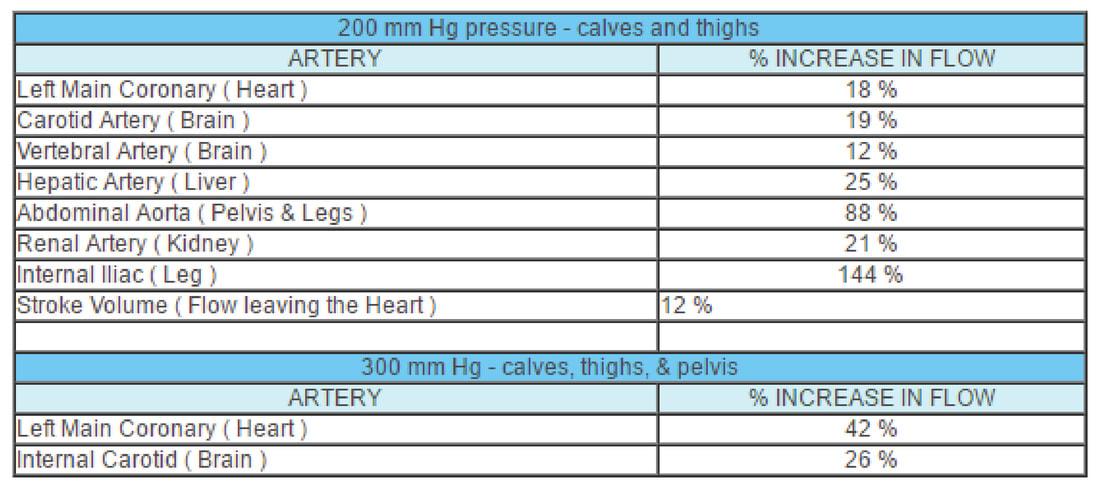In China, EECP is not confined to the treatment of coronary insufficiency. Stroke, cerebrovascular insufficiency, hepatitis, and even diabetes have been addressed with external counterpulsation with measurable benefits. Why should this be? We know that all of these disease states involve free radical tissue damage. Dr.Quan, in article 7, is going to show us that EECP has a significant antioxidant effect. EECP increases blood flow to the coronary arteries that serve the heart.
Could an increase in blood flow, with an attendant increase in oxygen and fuel supply to the diseased organ be a mechanism of benefit? Werner and colleagues set out to measure the effect of EECP on blood flow to different organ systems. They used doppler ultrasound (as in Dr. Katz's study - article 1) to measure blood flow per heart beat at rest, during EECP using calf and thigh cuff inflation, and during EECP using calf, thigh, and lower abdominal/pelvic cuff inflation (the method we use in the US). Here's what they found:
This ability of EECP to improve blood flow in general may lead to some additional applications of EECP in this country - research is ongoing and much more is planned

